A pre-purchase plumbing inspection is essential to identify potential problems before finalizing the purchase of a house. Key red flags to watch out for include low water pressure throughout the home, as well as visible signs of water damage. They also include slow-draining sinks and tubs, and unusual noises in the plumbing system.
It’s also important to check for rusty or corroded pipes, outdated plumbing materials, and water heater issues. Additionally, backflow prevention problems, improperly installed fixtures, and sewer line blockages or root intrusions can indicate significant plumbing concerns.
When buying a new home, unseen plumbing issues can lead to unexpected and costly repairs. Overlooking potential red flags in the plumbing system can result in significant disruptions and expenses shortly after moving in.
This guide will highlight the red flags to look for during a pre-purchase plumbing inspection. These insights will help you make an informed decision and protect your investment in a new home.
Pre-Purchase Plumbing Inspection: Red Flags to Watch Out For
When buying a new home, a thorough pre-purchase plumbing inspection is important to avoid unexpected and costly repairs. The plumbing system is one of the most essential components of a home, and overlooking potential problems can lead to significant issues down the road.
Plumbing problems can range from minor annoyances to major repairs, all of which can be costly and disruptive. By identifying potential issues early on, you can save yourself from unexpected expenses and ensure that your new home is safe and functional.
The following are the red flags to watch out for during your inspection:
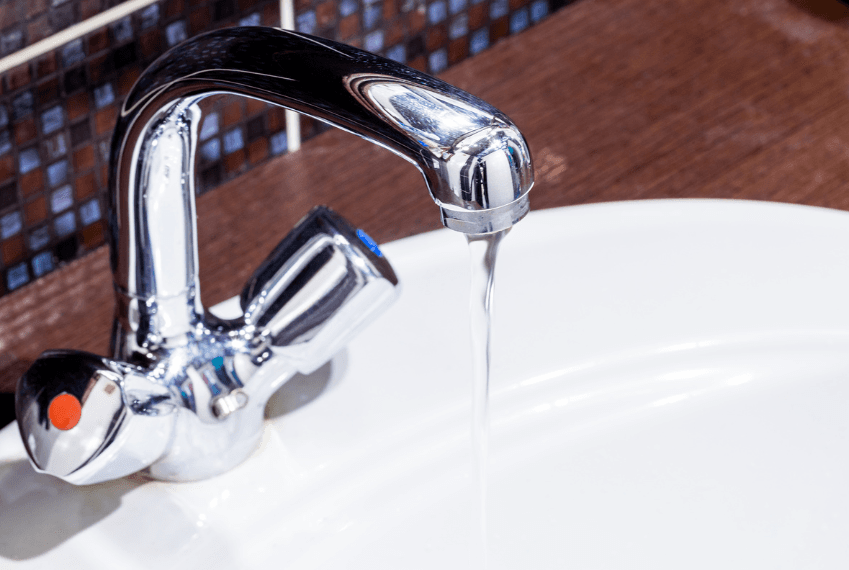
Low Water Pressure Throughout the Home
Low water pressure is a common red flag during a pre-purchase plumbing inspection. It can indicate several underlying issues, which might be costly to fix. Here’s what you should know:
- Potential Causes:
- Clogged pipes: Debris, mineral buildup, or rust inside the pipes can restrict water flow.
- Leaks: Hidden leaks in the plumbing system can reduce water pressure.
- Failing pressure regulator: A faulty pressure regulator can lead to inconsistent water pressure.
- What to Look For:
- Check multiple faucets and fixtures: Low pressure in one area might be a localized issue, but low pressure throughout the house suggests a bigger problem.
- Inspect the main water valve: Ensure it’s fully open to rule out a simple cause.

Visible Signs of Water Damage
Visible signs of water damage are serious red flags during a pre-purchase plumbing inspection. Water damage can indicate long-term issues affecting the home’s structural integrity. Here’s what to watch for:
- Common Indicators:
- Stains on ceilings or walls: Yellowish or brownish stains often point to past or current leaks.
- Peeling paint or wallpaper: Moisture behind walls can cause paint or wallpaper to bubble and peel.
- Warped or buckled floors: Water damage can cause floors to warp, especially if the leak has been ongoing.
- Areas to Inspect:
- Under sinks and around toilets: These areas are prone to leaks and should be checked thoroughly.
- Basement and crawl spaces: Look for dampness, mold, or musty odors indicating water intrusion.
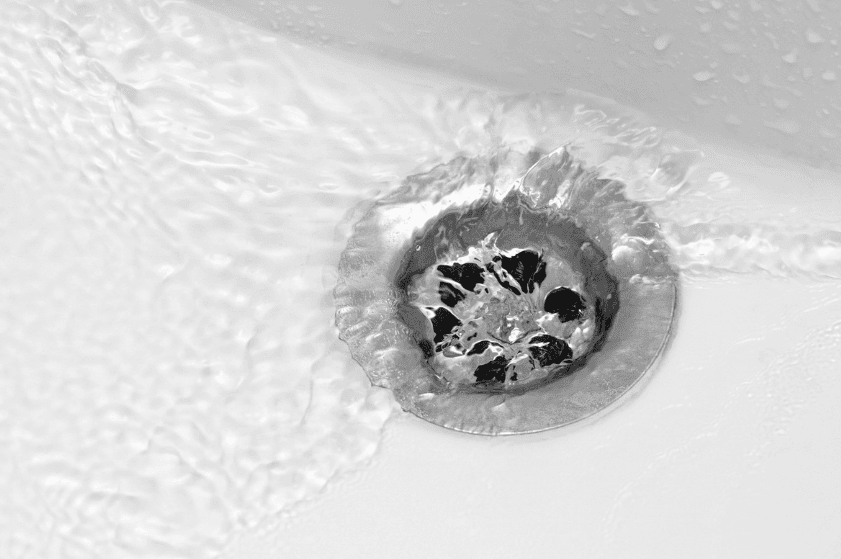
Slow Draining Sinks and Tubs
Slow draining sinks and tubs are clear red flags during a pre-purchase plumbing inspection. These issues often indicate blockages or other problems within the plumbing system.
Possible Causes:
- Clogged pipes: Hair, soap scum, and other debris can accumulate over time, causing blockages.
- Venting issues: Improper or blocked venting can slow drainage by preventing air from entering the plumbing system.
- Pipe slope problems: Incorrectly sloped pipes can hinder the flow of water, leading to slow drains.
- What to Look For:
- Test all drains: Run water in all sinks, tubs, and showers to see how quickly they drain.
- Listen for gurgling sounds: This can indicate a venting issue or blockage further down the drain line.

Unusual Noises in the Plumbing System
Unusual noises in the plumbing system are another red flag to watch out for. These noises can indicate underlying issues that might require attention. Here’s what to be aware of:
- Types of Noises:
- Banging or knocking: Often caused by loose pipes or a phenomenon known as water hammer, where water suddenly stops or changes direction.
- Whistling or squealing: Typically results from restricted water flow, often due to mineral deposits or worn-out valves.
- Gurgling: Can indicate a blockage or venting issue as air struggles to move through the pipes.
- What to Check:
- Run faucets and flush toilets: Listen for any unusual sounds when using different plumbing fixtures.
- Inspect visible pipes: Look for loose or improperly secured pipes that might be causing the noises.
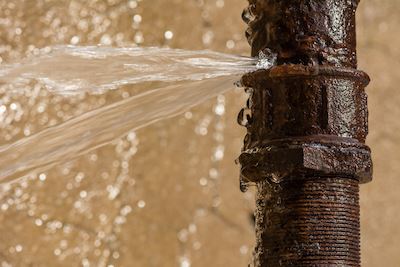
Rusty or Corroded Pipes
Rusty or corroded pipes are significant red flags during a plumbing inspection. They can lead to leaks, water quality issues, and even pipe failures. Here’s what you need to know:
- Signs of Rust and Corrosion:
- Discolored water: Brown or reddish water can indicate rust inside the pipes.
- Flaking or peeling pipes: Visible rust or corrosion on the outside of pipes suggests they are deteriorating.
- Reduced water flow: Corroded pipes can become narrowed, reducing water pressure and flow.
- What to Inspect:
- Look at exposed pipes: Check for signs of rust or corrosion, especially in basements and under sinks.
- Test water quality: Run the taps and check for discolored water, which can signal rust within the plumbing system.
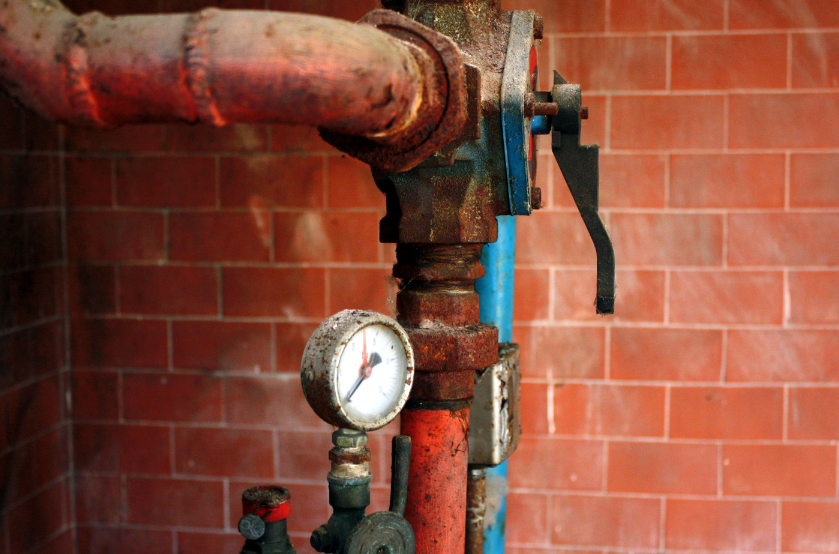
Outdated Plumbing Materials
Outdated plumbing materials can be a significant red flag during a pre-purchase inspection. Older materials often have a higher risk of failure, leading to leaks and other issues. Here’s what to consider:
- Common Outdated Materials:
- Galvanized steel: Prone to rust and corrosion, which can lead to reduced water flow and pipe failure.
- Polybutylene: Known for frequent failures and leaks, it is often found in homes built from the 1970s to the 1990s.
- Lead pipes: Can leach harmful lead into the water supply, posing serious health risks.
- What to Look For:
- Inspect exposed pipes: Check for signs of these materials in basements, under sinks, and utility rooms.
- Review the home’s plumbing history: Ask about past plumbing upgrades or issues to understand the system’s current state.
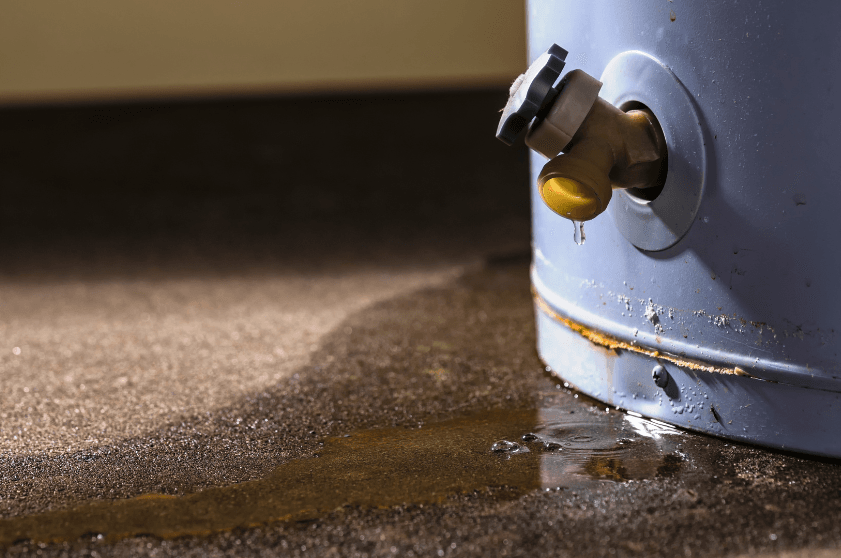
Water Heater Issues
Water heater issues are another critical aspect during a pre-purchase plumbing inspection. A malfunctioning water heater can lead to inconsistent water temperature and high energy bills. Here’s what to watch for:
- Common Problems:
- Sediment buildup: Accumulation of minerals at the bottom of the tank can reduce efficiency and lifespan.
- Leaks: Indicate potential failure and can cause water damage.
- Age: Water heaters typically last about 10-15 years. Older units are more prone to problems.
- What to Inspect:
- Check the age of the unit: Look for the manufacture date, often found on the label.
- Inspect for leaks and rust: Examine the area around the water heater for signs of water or rust.
- Test the temperature: Ensure the water heater provides consistent hot water.
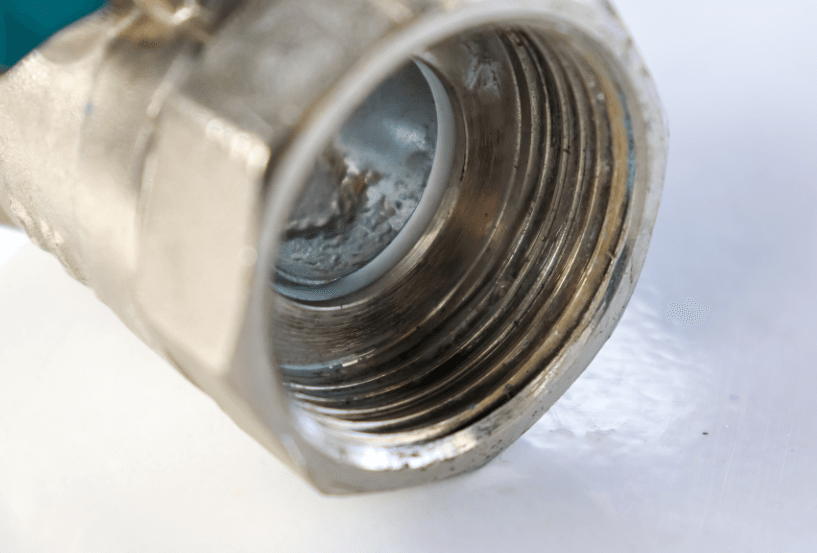
Backflow Prevention Problems
Backflow prevention problems can pose serious health risks by allowing contaminated water to flow back into the clean water supply. Ensuring the proper function of backflow prevention devices is important. Here’s what to know:
- Common Issues:
- Faulty or missing devices: Contaminated water can mix with the potable supply without proper backflow prevention.
- Improper installation: Incorrectly installed devices may not function correctly.
- Lack of maintenance: Regular testing and maintenance are required to ensure these devices work effectively.
- What to Check:
- Verify the presence of backflow prevention devices: Look for these devices on irrigation systems, hose bibs, and other water entry points.
- Inspect for signs of wear or damage: Ensure the devices are in good condition and have not deteriorated.
- Ask about maintenance records: Regular testing and maintenance are critical for backflow preventers.
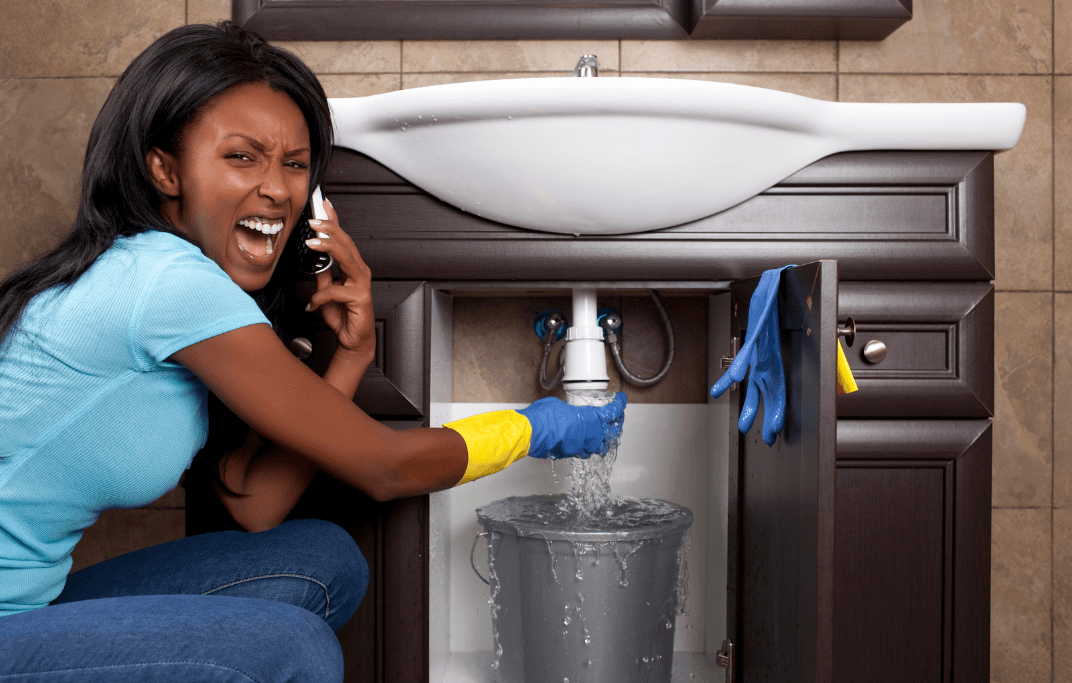
Improperly Installed Fixtures
Improperly installed fixtures can lead to various plumbing issues, from leaks to inefficient water usage. These problems can often be spotted during a pre-purchase plumbing inspection. Here’s what you need to know:
- Common Issues:
- Leaks: Fixtures not properly sealed or connected can leak, causing water damage and increasing water bills.
- Poor water flow: Incorrect installation can restrict water flow, leading to low pressure or uneven distribution.
- Misalignment: Fixtures that are not correctly aligned can cause discomfort and may not function as intended.
- What to Look For:
- Check for leaks: Inspect under sinks, around toilets, and near showers for any signs of water.
- Test water flow: Turn on faucets and showers to ensure water flows smoothly and with adequate pressure.
- Examine fixture stability: Make sure fixtures are securely attached and do not move when used.
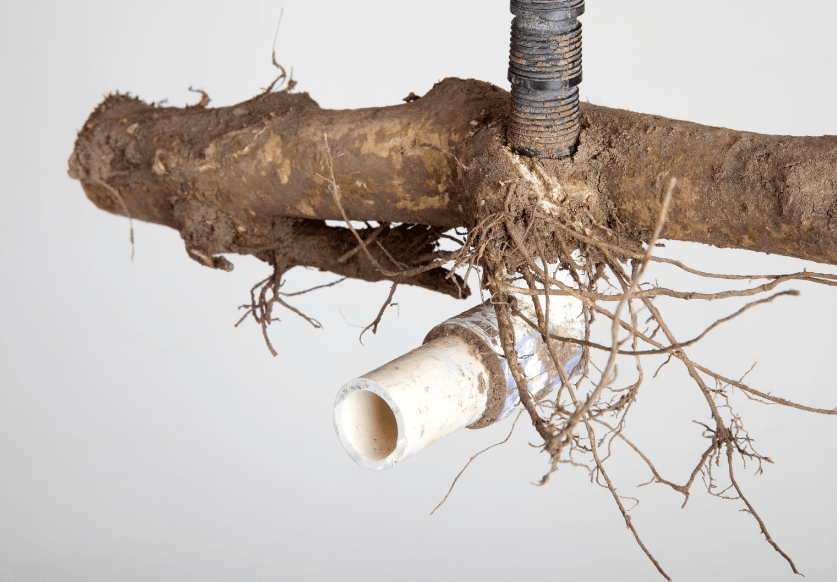
Sewer Line Blockages and Root Intrusions
Sewer line blockages and root intrusions are significant concerns during a plumbing inspection. These issues can cause backups and severe damage to the plumbing system. Here’s what to be aware of:
- Common Causes:
- Tree roots: Roots can infiltrate sewer lines through small cracks or joints, causing blockages and damage.
- Accumulated debris: Grease, food particles, and other debris can build up over time, leading to clogs.
- Pipe damage: Cracked or broken pipes can collapse, creating obstructions in the sewer line.
- What to Look For:
- Slow drains: Multiple slow drains throughout the house can indicate a main sewer line blockage.
- Unpleasant odors: Foul smells coming from drains can suggest sewer line issues.
- Unusual green patches in the yard: Lush areas in the yard may indicate a leaking sewer line where tree roots absorb extra nutrients.
A thorough pre-purchase plumbing inspection is essential to identify these potential red flags. Taking the time to perform a comprehensive inspection helps protect your investment and provides peace of mind as you move into your new property.
